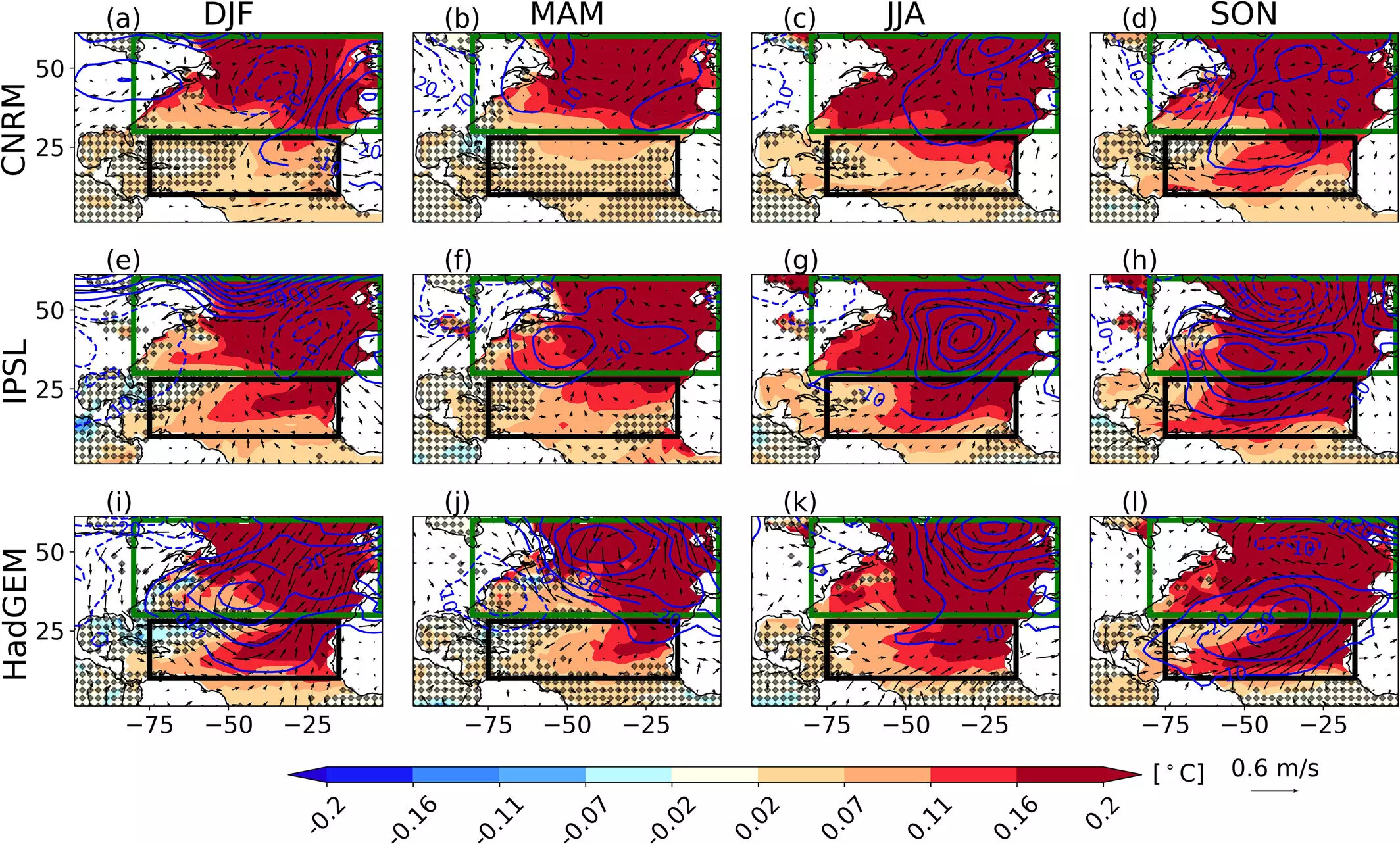Recent research underscores the importance of oceanic processes, particularly in the Atlantic Ocean, in influencing global climate dynamics. The Atlantic Multidecadal Variability (AMV) represents a critical climate phenomenon characterized by periodic warming and cooling phases in the North Atlantic. Traditionally, the driving forces behind this variability were attributed primarily to the exchanges of heat between the ocean and atmosphere. However, a new study conducted by researchers, including Dr. Balaji Senapati from the University of Reading, offers a transformative perspective, highlighting the role of the ocean’s mixed layer as a pivotal agent in shaping climate patterns on a global scale.
The mixed layer of the ocean, which exists at the surface where the wind and waves mix warm water with the cooler depths below, is now recognized as a key component influencing climate variability. This research indicates that fluctuations in this mixed layer depth are critical in modulating the AMV. During warmer periods in the extratropical North Atlantic, for instance, the trade winds experience a weakening, which in turn causes the mixed layer to become shallower. This effect is most pronounced during the summer months, wherein the sun’s energy is concentrated over a thinner layer of water, consequently intensifying heating in the tropical Atlantic.
This mechanism initiates a feedback loop: warmer waters lead to a further weakening of trade winds, deeper implications of which could result in significant warming trends in tropical regions. Understanding this interconnectivity is crucial, as it suggests that changes in ocean dynamics can have cascading effects on climate patterns—impacting weather phenomena across vast regions, including North America, Europe, and Africa.
One of the most pressing implications of this research lies in its potential effects on climate modeling and long-range weather forecasting. Current models may not adequately capture these intricate upper-ocean processes, raising concerns regarding the reliability of predictions related to the AMV and its broader impacts. Correctly integrating these new findings into climate models could enhance their predictive power, allowing for better projections of long-term climate shifts.
As the global community increasingly confronts the realities of climate change, insights derived from studies like this one become invaluable. These advanced understandings not only bolster our comprehension of natural climate variability but also aid in the formulation of effective mitigation strategies.
The study led by Dr. Senapati challenges conventional interpretations of climate variability, emphasizing the importance of ocean mixing dynamics. It serves as a reminder that understanding the complexities of our planet’s systems is vital as we strive to tackle the challenges posed by climate change. By enhancing our grasp of how the ocean influences climate across different regions, we pave the way for improved climate resilience efforts, ultimately contributing to a more sustainable future in the face of ongoing environmental change. This research highlights an exciting frontier in climate science, underscoring the interconnectedness of oceanic and atmospheric processes in shaping our world.


Leave a Reply